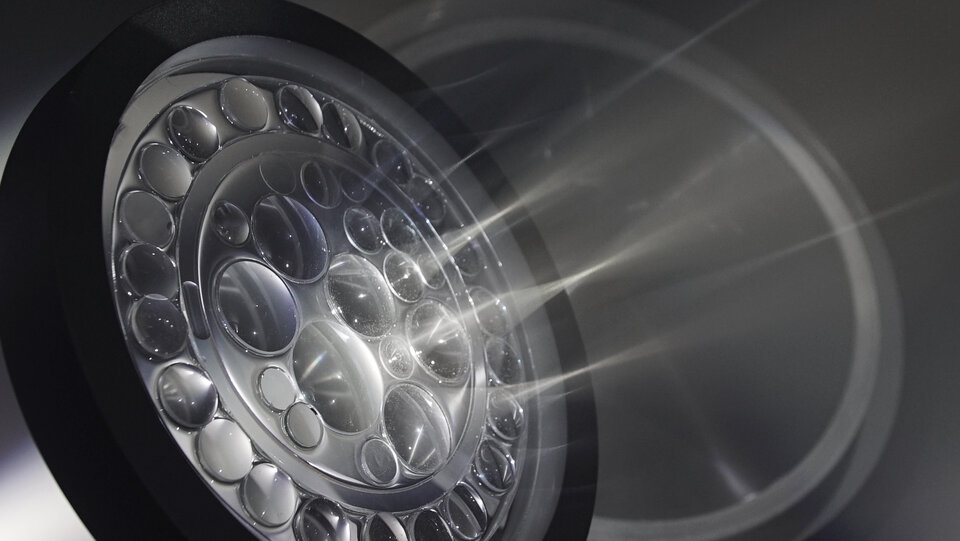Gravity Lens
Utility
What use is a gravity lens for a vehicle?
Lenses can be used to both focus and unfocus. Gravity lenses used in vehicles can unfocus gravity between the vehicle and the earth, making the vehicle weigh just a fraction of what it would without it. Such lensing makes hover vehicles a real and viable practical possibility because it brings the power requirements to achieve hover well within reasonable levels. Of course, such lensing increases the pull of gravity in a ring around the vehicle, making cargo transfer or just getting in and out of the vehicle something of a challenge.
Can gravity lenses be used in other ways?
Yes. Gravity lenses can be used to focus all the forces of gravity within an area into a pinpoint location. This can be used to immobilize objects and even people. It can be used in all manner of manufacturing processes and even for military use.
The greatest limitation of gravity lenses is their short range. As a rule of thumb, the area of effect of a gravity lens is about ten times the size of the lens core. So a lens core that is about 10 cm across has an effective range of about a meter from it. This is the typical hoverbike lens, for example.
Gravity lenses can not be employed by vehicles used over deep water. As one would expect, the waves created by the ring of increased gravity around the vehicle and the decreased gravity directly under the vehicle create a geyser-like effect. Only the very fastest vehicles can hope to overcome this dangerous phenomenon and only while they maintain their speed.
Manufacturing
The manufacturing process for gravity lenses is very power intensive.
Depending on the ultimate use, a number of different processes can be used to create the final form. One thing all these processes have in common, however, is the molecular smashing of millions of hydrogen atoms into supermassive semi-stable isotopes. These isotopes consist of a prime number of hydrogen nucleii and are given the name Gravitonium. Gravitonium 7879 is one of the most common. Their arrangement determines the lensing effect, which occurs when they are induced to vibrate.
If you have ever seen videos of people arranging sand on a table into patterns based upon the vibrations they make in the tabletop, then you have an idea how it works. The correct vibration will start distributing the sand but it takes time and considerable vibrational amplitude to complete the pattern. Once complete, however, no more effort needs to be made to keep the pattern, except to fix it when it suffers from outside influences. So it is with a gravity lens.
The initial lensing effect, achieving the desired vibrational frequency, requires quite a bit of forcing and is the reason it takes so much power to initialize a gravity lens. However, once initialized, the lens effect can be maintained with only a minimal amount of energy to cover for entropy and friction losses.
Access & Availability
Gravity lenses for use in hover vehicles are commonly available in technologically advanced nation-states such as Northern Gun, the Manistique Imperium, The Coalition States and Bandito Arms.
Complexity
A gravity lens requires an enormous amount of power to initialize; but once initialized, only a small trickle of power is required to maintain it. For this reason, gravity lenses are typically powered up before installation, in a specially designated initialization facility, or with a special-purpose lens initiator which is similar to an emergency jump-start device.
Discovery
It all started when astrophysicists used the curvature of light past massive objects in space to get a magnified view of even more distant objects beyond them. They called this a gravity lens, because it was an optical lens in every meaning of the word, but the medium of refraction was gravity itself.
Near the end of the 21st century the continued use and study of gravitational lensing eventually resulted in the ability to create a lens that focuses gravity rather than light. In a few short years, such lenses evolved from enormous mega-structures that could only be used for long distance stargazing to portable units suitable for vehicles.
- 8 e-clip for charging 2-meter diameter coverage gravity lenses common to most hoverbikes and pallet conveyors (list price=25,000 credits)
- 32 e-clip for charging 4-meter diameter coverage gravity lenses common for most economical 2-person transportation and cargo handlers (list price=50,000 credits)
- 70 e-clip for charging 6-meter diameter coverage gravity lenses used for personnel transports and industrial applications. (list price=75,000 credits)
Single-use Emergency Initiators come in the same three sizes and ar manufactured by Northern Gun, The Coalition States, Manistique Imperium and Bandito Arms. They are smaller, heavier and cost about the same as the multi-use converters listed above, but they are self contained and do not require the expenditure of e-clips.



Comments